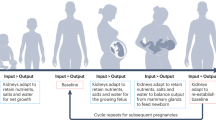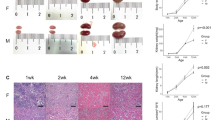Abstract
The c-ret proto-oncogene encodes a receptor tyrosine kinase which is important for the development of the kidney and the enteric nervous system. During nephrogenesis, c-ret is expressed in the ureteric bud epithelium and later in its derivative, the collecting duct. This takes place during 11–17.5 days post-coitum (d.p.c.) in the mouse and our immunohistochemical study showed that the RET protein co-localized with the transcript. At 18.5 d.p.c. the kidney is fully differentiated. At 18.5 d.p.c., 1 week and 10 weeks old, RET was found in the proximal convoluted tubules, which is formed from the condensed mesenchyme. This suggests that c-ret may also play a role in kidney function. For the 10 weeks old kidney, RET immunostaining in male was concentrated on the basolateral side while female had a stronger staining in the whole cell. Furthermore, cytoplasmic staining was observed in male whereas both cytoplasmic and nuclear staining was found in female. c-ret transcript was detected by RT–PCR, and in situ hybridization showed its expression throughout the kidney. The reason for the sex-specific staining and the role of RET in kidney function remain to be determined.
This is a preview of subscription content, access via your institution
Access options
Subscribe to this journal
Receive 50 print issues and online access
$259.00 per year
only $5.18 per issue
Buy this article
- Purchase on SpringerLink
- Instant access to full article PDF
Prices may be subject to local taxes which are calculated during checkout



